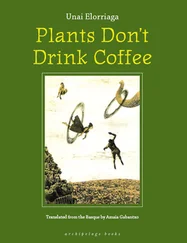Physiology of Salt Stress in Plants
Здесь есть возможность читать онлайн «Physiology of Salt Stress in Plants» — ознакомительный отрывок электронной книги совершенно бесплатно, а после прочтения отрывка купить полную версию. В некоторых случаях можно слушать аудио, скачать через торрент в формате fb2 и присутствует краткое содержание. Жанр: unrecognised, на английском языке. Описание произведения, (предисловие) а так же отзывы посетителей доступны на портале библиотеки ЛибКат.
- Название:Physiology of Salt Stress in Plants
- Автор:
- Жанр:
- Год:неизвестен
- ISBN:нет данных
- Рейтинг книги:4 / 5. Голосов: 1
-
Избранное:Добавить в избранное
- Отзывы:
-
Ваша оценка:
- 80
- 1
- 2
- 3
- 4
- 5
Physiology of Salt Stress in Plants: краткое содержание, описание и аннотация
Предлагаем к чтению аннотацию, описание, краткое содержание или предисловие (зависит от того, что написал сам автор книги «Physiology of Salt Stress in Plants»). Если вы не нашли необходимую информацию о книге — напишите в комментариях, мы постараемся отыскать её.
Discover how soil salinity affects plants and other organisms and the techniques used to remedy the issue Physiology of Salt Stress in Plants,
Physiology of Salt Stress in Plants
Physiology of Salt Stress in Plants
Physiology of Salt Stress in Plants — читать онлайн ознакомительный отрывок
Ниже представлен текст книги, разбитый по страницам. Система сохранения места последней прочитанной страницы, позволяет с удобством читать онлайн бесплатно книгу «Physiology of Salt Stress in Plants», без необходимости каждый раз заново искать на чём Вы остановились. Поставьте закладку, и сможете в любой момент перейти на страницу, на которой закончили чтение.
Интервал:
Закладка:
The unique ability of halophytes to accumulate salt ions in the root and shoot vacuole with very low leakage provides them the unique ability to extract salts from the soil. It thus may act in the desalinization of degraded land. Some halophytes such as S. brachiata (40% of dry weight) and Atriplex sp. (39% of the dry weight) serve as the salt accumulator (Barrett‐Lennard 2002) and therefore can be extensively used for the phytoremediation. Panta et al. (2014) have provided a table of the halophytes from the previously published report, which describes different species from the genus Suaeda, Atriplex, Tectocornia, Sesuvium, Anthrocnemum, Excoecarcia, Ipomoea, Batis, and Salicornia , which were used in past or have a high potential in coming future for the desalinization and removal of the heavy metals from the degraded soil.
2.7 Conclusion and Future Perspectives
Salt stress affects plants’ survival and productivity. Research on understanding the mechanism of salinity stress gave us significant insight into the plants’ response to salt stress and how halophytes respond differently than the glycophytes. However, the complete mechanistic understanding of the salt tolerance mechanism in the halophytes at the developmental and intracellular molecular levels is lacking. To meet the food, feed, fiber, and fuel demand of the growing human population and improve the abiotic stress resilience of the crop, there are two ways to pursue in parallel; one, adopting the halophyte for food, forage, and fuel generation by growing them in the salt‐affected land, and, second, understanding the salt‐stress tolerance mechanism in the halophytes and then engineering the genome of glycophytic crop plants for better salt‐stress tolerance. Halophytes grown by seawater irrigation have shown their significance by producing a higher yield of oil and protein‐rich seeds than a conventional oilseed crop, which suggested that the salt‐degraded land can be used for growing halophytes for edible oil or biofuel. Halophytes were also used to restore the wasteland by desalinization and phytoremediation of the heavy metals, used as forage for the cattle and vegetable salads in different parts of the world. The halophyte C. quinoa seeds are rich in minerals and vitamins and gained popularity as mainstream food because of its gluten‐free nature. For improving the salt‐stress tolerance in the crop plants, the current requirement is to understand salt‐stress sensory system at the root, root to shoot signaling, and intracellular sensory and responses at the cell organelles such as chloroplasts, mitochondria, or peroxisomes in halophytes. In halophytes, yet very little is known about the development and functioning mechanism of the EBC or different types of the salt glands. Understanding these mechanisms and engineering, the crop using the genome‐editing approach may improve the salt‐stress tolerance of the crops within a shorter time frame.
References
1 Abbasi, F.M. and Komatsu, S. (2004). A proteomic approach to analyze salt‐responsive proteins in rice leaf sheath. Proteomics 4: 2072–2081.
2 Babu, G.A. and Reddy, S.M. (2011). Diversity of arbuscular mycorrhizal fungi associated with plants growing in fly ash pond and their potential role in ecological restoration. Curr. Microbiol. 63: 273–280.
3 Bao, H., Chen, X., Lv, S. et al. (2015). Virus‐induced gene silencing reveals control of reactive oxygen species accumulation and salt tolerance in tomato by γ‐aminobutyric acid metabolic pathway. Plant Cell Environ. 38: 600–613.
4 Barrett‐Lennard, E.G. (2002). Restoration of saline land through revegetation. Agric. Water Manag. 53: 213–226.
5 Bose, J., Munns, R., Shabala, S. et al. (2017). Chloroplast function and ion regulation in plants growing on saline soils: lessons from halophytes. J. Exp. Bot. 68: 3129–3143.
6 Busch, K., Piehler, J., and Fromm, H. (2000). Plant succinic semialdehyde dehydrogenase: dissection of nucleotide binding by surface plasmon resonance and fluorescence spectroscopy. Biochemistry 39: 10110–10117.
7 Chattopadhyay, A., Subba, P., Pandey, A. et al. (2011). Analysis of the grasspea proteome and identification of stress‐responsive proteins upon exposure to high salinity, low temperature, and abscisic acid treatment. Phytochemistry 72: 1293–1307.
8 Chaudhary, D.R., Rathore, A.P., and Jha, B. (2018). Aboveground, belowground biomass and nutrients pool in Salicornia brachiata at coastal area of India: interactive effects of soil characteristics. Ecol. Res. 33: 1207–1218.
9 Che‐Othman, M.H., Millar, A.H., and Taylor, N.L. (2017). Connecting salt stress signalling pathways with salinity‐induced changes in mitochondrial metabolic processes in C3 plants. Plant Cell Environ. 40: 2875–2905.
10 Chiang, C.P., Yim, W.C., Sun, Y.H. et al. (2016). Identification of ice plant (Mesembryanthemum crystallinum L.) microRNAs using RNA‐seq and their putative roles in high salinity responses in seedlings. Front. Plant Sci. 7: 1143.
11 Choi, W.G., Toyota, M., Kim, S.H. et al. (2014). Salt stress‐induced Ca2+ waves are associated with rapid, long‐distance root‐to‐shoot signaling in plants. Proc. Natl. Acad. Sci. U. S. A. 111: 6497–6502.
12 Christmann, A., Grill, E., and Huang, J. (2013). Hydraulic signals in long‐distance signaling. Curr. Opin. Plant Biol. 16: 203–300.
13 Dassanayake, M. and Larkin, J.C. (2017). Making plants break a sweat: the structure, function, and evolution of plant salt glands. Front. Plant Sci. 8: 1–20.
14 Dumont, S. and Rivoal, J. (2019). Consequences of oxidative stress on plant glycolytic and respiratory metabolism. Front. Plant Sci. 10: 1–16.
15 Fahy, D., Sanad, M.N.M.E., Duscha, K. et al. (2017). Impact of salt stress, cell death, and autophagy on peroxisomes: Quantitative and morphological analyses using small fluorescent probe N‐BODIPY. Sci. Rep. 7: 1–17.
16 FAO (2005). Salt‐Affected Soils from Sea Water Intrusion: Strategies for Rehabilitation and Management. Report of the regional workshop on salt‐affected soils from sea water intrusion: Strategies for rehabilitation and management, RAP PUBLICATION 2005/11. Bangkok, Thailand 6 pp.
17 Fernie, A.R., Carrari, F., and Sweetlove, L.J. (2004). Respiratory metabolism: glycolysis, the TCA cycle and mitochondrial electron transport. Curr. Opin. Plant Biol. 7: 254–261.
18 Finazzi, G., Petroutsos, D., Tomizioli, M. et al. (2015). Ions channels/transporters and chloroplast regulation. Cell Calcium 58: 86–97.
19 Flowers, T.J. (1972). Salt tolerance in Suaeda maritima (L.) dum: the effect of sodium chloride on growth, respiration, and soluble enzymes in a comparative study with Pisum sativum L. J. Exp. Bot. 23: 310–321.
20 Flowers, T.J. and Colmer, T.D. (2008). Salinity tolerance in halophytes. New Phytol. 179: 945–963.
21 Flowers, T.J., Troke, P.F., and Yeo, A.R. (1977). The mechanism of salt tolerance in halophytes. Annu. Rev. Plant Physiol. 28: 89–121.
22 Flowers, T.J., Munns, R., and Colmer, T.D. (2015). Sodium chloride toxicity and the cellular basis of salt tolerance in halophytes. Ann. Bot. 115: 419–431.
23 Fricke, W., Akhiyarova, G., Veselov, D., and Kudoyarova, G. (2004). Rapid and tissue‐specific changes in ABA and in growth rate in response to salinity in barley leaves. J. Exp. Bot. 55: 1115–1123.
24 Gallagher, J.L. (1985). Halophytic crops for cultivation at seawater salinity. Plant Soil 89: 323–326.
25 Galvan‐Ampudia, C.S., Julkowska, M.M., Darwish, E. et al. (2013). Halotropism is a response of plant roots to avoid a saline environment. Curr. Biol. 23: 2044–2050.
26 Ghosh, S., Bagchi, S., and LahiriMajumder, A. (2001). Chloroplast fructose‐1,6‐bisphosphatase from Oryza differs in salt tolerance property from the Porteresia enzyme and is protected by osmolytes. Plant Sci. 160: 1171–1181.
Читать дальшеИнтервал:
Закладка:
Похожие книги на «Physiology of Salt Stress in Plants»
Представляем Вашему вниманию похожие книги на «Physiology of Salt Stress in Plants» списком для выбора. Мы отобрали схожую по названию и смыслу литературу в надежде предоставить читателям больше вариантов отыскать новые, интересные, ещё непрочитанные произведения.
Обсуждение, отзывы о книге «Physiology of Salt Stress in Plants» и просто собственные мнения читателей. Оставьте ваши комментарии, напишите, что Вы думаете о произведении, его смысле или главных героях. Укажите что конкретно понравилось, а что нет, и почему Вы так считаете.












